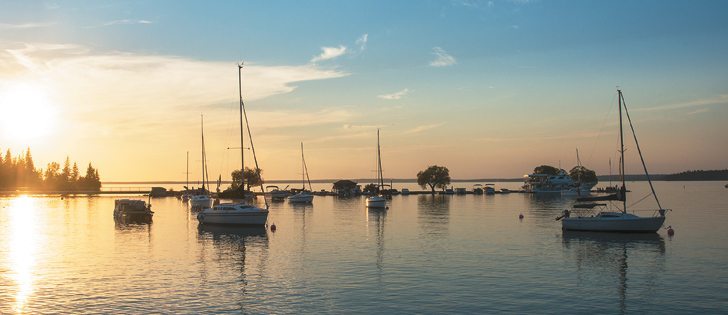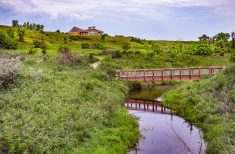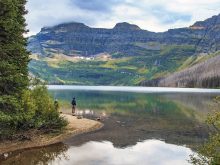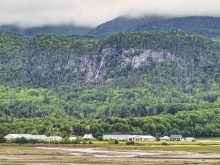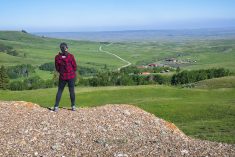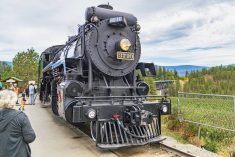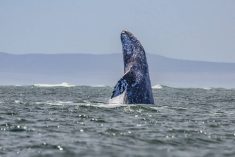Our drive through the gently undulating terrain of forest, wetlands and lakes changes suddenly and dramatically as we approach the eastern edge of Riding Mountain National Park.
A window opens in the thick forest and we gaze down over the patchwork of croplands some 400 metres below.
Then the winding road sharply descends the Manitoba Escarpment, which 11,000 years ago marked the western shoreline of massive glacial Lake Agassiz, holding more water than all of the current day Great Lakes combined.
For early fur traders approaching from the east, horseback was the most practical way across the escarpment, so it became known as a mountain for riding.
Read Also

Know what costs are involved in keeping crops in the bin
When you’re looking at full bins and rising calf prices, the human reflex is to hold on and hope for more. That’s not a plan. It’s a bet. Storage has a price tag.
While the rugged, glacier-carved escarpment is the most obvious feature, it’s only one aspect of the park’s remarkable variety. Its setting in Western Manitoba puts Riding Mountain near the centre of the continent, so the landscape and vegetation combine influences from every direction.
Aspen parkland dotted with wetlands mixes with boreal forest and lakelands more common to the north. Lush stands of eastern hardwood forest in the lowlands seem a world away from the western area holding some of Manitoba’s last remaining stands of native fescue grasslands.
This rich variety attracts an exceptional array and quantity of wildlife: moose, white-tailed deer, wolves, coyotes, cougars, some 260 bird species and one of the highest densities of black bears in North America.
The park is home to Manitoba’s largest elk herd, with fall a prime time to find bulls loudly bugling and gathering their harems. Sometimes there are surprises.
Lynx are notoriously reclusive and seldom seen in the wild, yet one of these distinctive, pointy-eared cats ran right in front of us on a major park road.
Bison are the easiest animals to watch, grazing in mostly open grasslands. We found the setting as impressive as the animals.
Wildflowers of every hue reached their peak during our mid-August visit. Humid weather brought early morning fog and a magical scene as the great furry creatures emerged from the mist onto the carpet of colour.
Even at the height of tourist season, we had roads in this area much to ourselves in early morning.
Besides wildlife viewing, visitors come for swimming, boating, fishing, golfing or just lazing on the beach.
But the park is especially known for its 400 kilometre trail system, mostly for hiking, but also for biking or travelling by horseback, including everything from short easy strolls to demanding multi-day excursions.
The most scenic routes wind through the escarpment, serving up one sweeping vista after another. A highlight is the Jet Trail, with views over iconic landmarks like Bald Hill, an unusual bare shale dome surrounded by thick forest.
The bustling resort townsite of Wasagaming on the shores of Clear Lake is the site of most services and accommodation. It was at the main campground here that Parks Canada experimented with comfortable camping.
The otentik is a cross between a tent and rustic cabin. These spacious permanent canvas tents have a wooden floor and deck, bunk beds sleeping up to six people, table and chairs and gas barbecue.
Aimed at people who want more comfort and convenience than tenting, they are also popular with visitors who don’t have camping gear or who camp only occasionally.
Now available in several national parks, otentiks were launched as a pilot project here. Because of high demand, the park is planning to install several more.
If you prefer to be more away-from-it-all, head to the smaller, more basic campsites scattered around the park. Our favourite is Lake Audy, where almost every site has a scenic lakefront view, with good wildlife viewing nearby.
For more information, visit www.pc.gc.ca or www.travelmanitoba.com.


